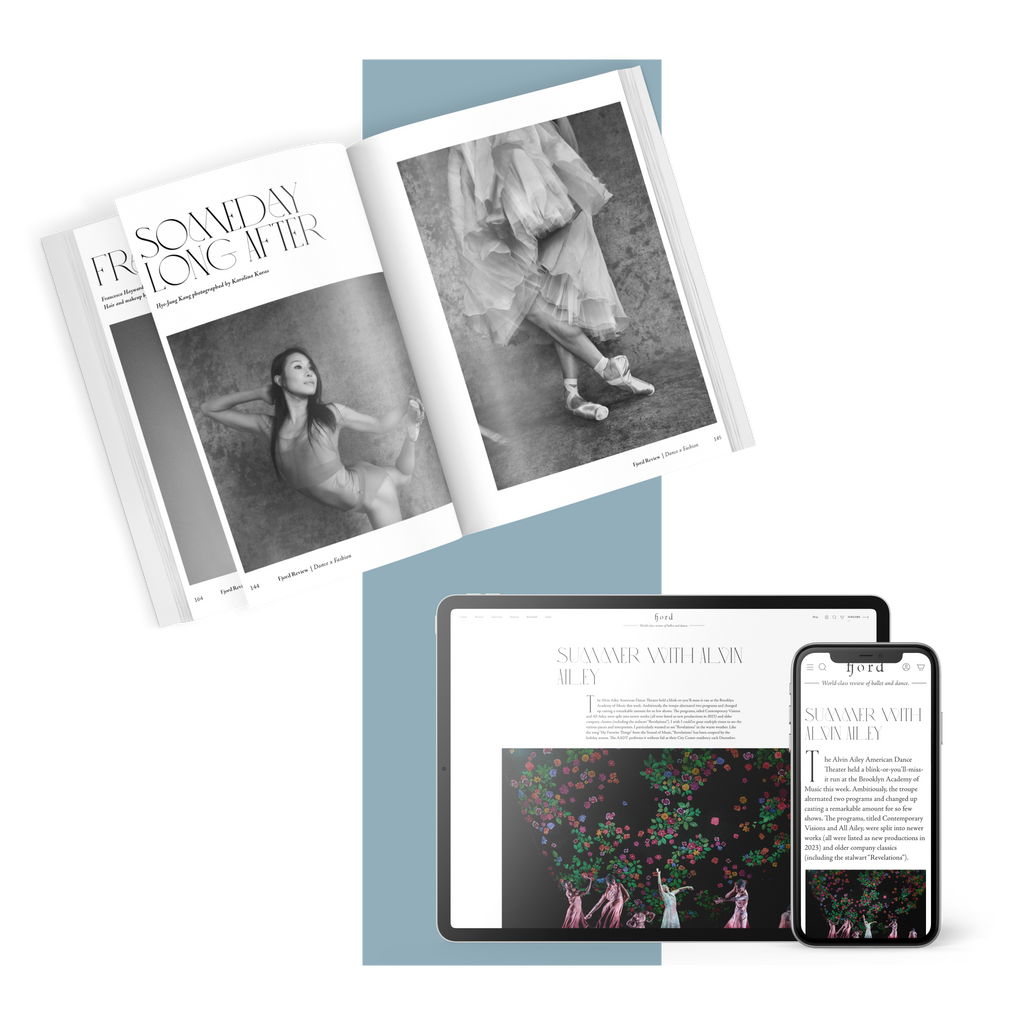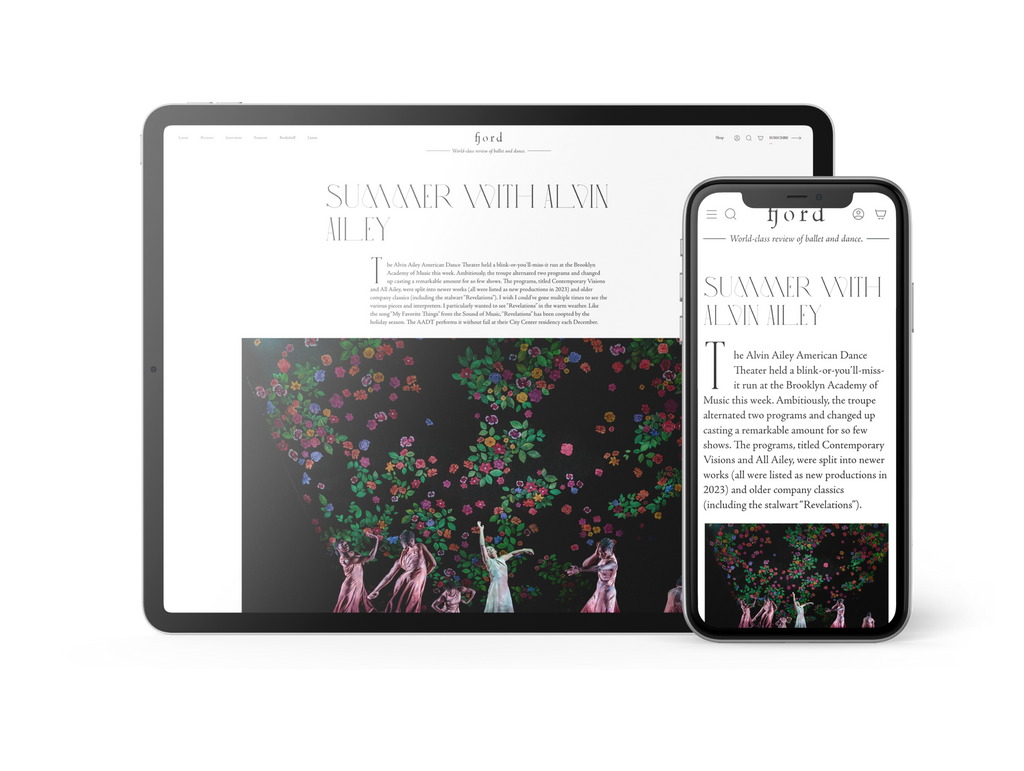Spellbound
Two performers crawl in on hands and knees wearing neon green, hooded coveralls—the lightweight papery kind made for working in a sterile environment—and clusters of balloons pinned to their backs.
Plus
World-class review of ballet and dance.
On the back of a US tour of Annabelle Lopez Ochoa’s imaginative reworking of “A Streetcar Named Desire” comes another bold showing from Scottish Ballet: a double bill with works from Crystal Pite and Angelin Preljoçaj. It’s an edgy turn for the company, and some slick, focused displays of dance arise from it, particularly in Pite’s “Emergence,” created in 2009 for National Ballet of Canada and acquired by Scottish Ballet last year.
Performance
Place
Words

Scottish Ballet perform Crystal Pite’s “Emergence.“ Photograph by Andy Ross


“Uncommonly intelligent, substantial coverage.”
Your weekly source for world-class dance reviews, interviews, articles, and more.
Already a paid subscriber? Login
Two performers crawl in on hands and knees wearing neon green, hooded coveralls—the lightweight papery kind made for working in a sterile environment—and clusters of balloons pinned to their backs.
PlusWill Rawls makes boundaries visible by defying them. Known for the disciplinary and topical range of his projects, the choreographer, director, and performer approaches issues of representation in “[siccer],” a multi-part, multi-site work co-presented by L’Alliance New York’s Crossing the Line Festival. A live performance at Performance Space New York accompanies a multimedia installation at the Kitchen, a book published by Wendy’s Subway, and an album published by the artist. With a creative process reaching back to 2018, the work delves explicitly into pandemic-era energies and inertias with focused intimacy and a pervasive sense of instability.
PlusIt is always interesting when multiple theme steps emerge over the course of a mixed repertory evening, but it is uncanny on one featuring five different ballets, each with a different choreographer and composer, covering a twenty-year span (2005-2025).
PlusZvidance premiered its new work “Dandelion” mid-November at New York Live Arts. Founded by Zvi Gotheiner in 1989, Zvidance has been a steady presence in the New York contemporary dance scene, a reliable source of compositional integrity, and a magnet for wonderful dancers.
Plus
comments